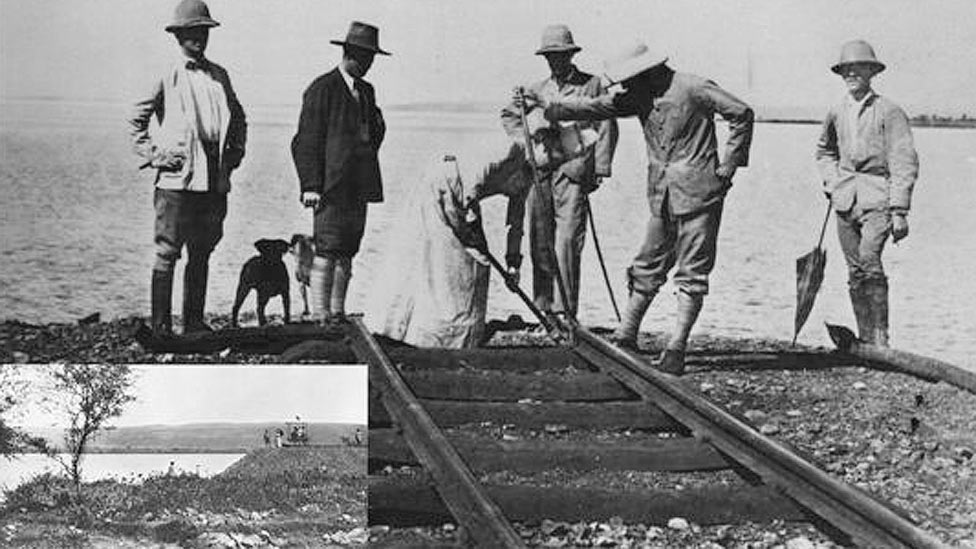Kenya, a nation rich in cultural diversity and historical depth, is home to many towns and cities with more than one name. This phenomenon is not just a quirk of geography; it’s a reflection of the complex tapestry of identities, colonial history, linguistic diversity, and socio-political changes that have shaped the country. Understanding why some Kenyan towns have multiple names requires delving into the historical, cultural, and social dynamics that have influenced the naming conventions over the years.
1. The Legacy of Colonialism
One of the primary reasons for the existence of multiple names for Kenyan towns is the country’s colonial past. During the British colonial period, many towns were renamed or given anglicized versions of their indigenous names. For instance, the town of Eldoret was originally known as “Farm 64” because it was the 64th farm established by settlers in the area. Over time, as the town grew and became more prominent, the name Eldoret, derived from the Maasai word “eldore,” meaning “stony river,” became more widely used. The colonial renaming often ignored or altered indigenous names, but the original names persisted among local communities.
2. Indigenous Names and Cultural Identity
Kenya’s diverse ethnic groups have their own languages, cultures, and naming traditions. Many towns have indigenous names that reflect the cultural identity of the communities that live there. These names often have significant meanings, tied to the landscape, historical events, or cultural practices. For example, the town of Thika is known by the Kikuyu as “Githiga,” meaning “burial place,” a name rooted in local history and folklore. However, the name Thika, derived from the Swahili word “sika,” meaning “bury,” became more commonly used during the colonial era. Both names coexist, reflecting different layers of cultural identity.
3. Post-Colonial Renaming and National Identity
After gaining independence in 1963, Kenya went through a period of renaming towns and cities as a way to reclaim indigenous identities and break away from the colonial legacy. Some towns reverted to their original names, while others adopted new names that reflected the aspirations of a newly independent nation. For instance, Nairobi’s Uhuru Park, originally a colonial recreation area, was renamed to symbolize the country’s freedom (“uhuru” means “freedom” in Swahili). The process of renaming was part of a broader effort to establish a national identity that honored Kenya’s diverse cultures and histories.
4. Linguistic Diversity and Translation Variations
Kenya’s linguistic diversity also plays a role in the existence of multiple names for the same town. With over 60 languages spoken across the country, different communities may refer to the same town by different names, each with its own pronunciation and meaning. For example, the town of Garissa is known as “Ghareesa” in Somali, reflecting the phonetic nuances of the Somali language. These linguistic variations contribute to the multiplicity of names, with different communities using the name that resonates most with their language and cultural context.
5. Political and Administrative Changes
Political and administrative changes have also influenced the naming of towns in Kenya. Over the years, as the country’s administrative boundaries have been redrawn and new counties established, some towns have been renamed to reflect their new status or to honor political figures. For example, Kisumu, a major city in western Kenya, was once known as “Port Florence” during the colonial period. After independence, the name Kisumu, derived from the Luo word “kisuma,” meaning “a place to look for food,” was restored, reflecting the town’s historical and cultural significance to the Luo community.
6. Religious and Missionary Influence
The influence of religious missions in Kenya’s history has also contributed to the multiple names of some towns. Missionaries often established schools, hospitals, and churches in various towns, and in some cases, these towns were named after religious figures or saints. For instance, the town of St. Mary’s was named by Catholic missionaries, but it is also known by its indigenous name, Marigat. The coexistence of these names reflects the dual influence of religion and indigenous culture in the area.
7. Commercial and Trade Names
Commercial activities and trade routes have also played a role in the naming of towns. Some towns developed around trading centers and were named based on the goods traded or the market days. For example, the town of Kericho, known for its tea plantations, has a name that is believed to be derived from the Kipsigis word “kerichek,” meaning “a place of young people.” However, during the colonial period, it was often referred to by its English name, “Kericho,” which became more widely recognized. The dual names reflect the town’s economic significance and its indigenous roots.
8. Local vs. Official Names
In many cases, towns have both local and official names, with the local names being used by the community and the official names being recognized by the government. This duality is often seen in towns that were renamed during the colonial period but where the local population continued to use the indigenous name. For example, the town of Nakuru is known locally as “Nakuru,” which means “dusty place” in Maasai, but it was also referred to as “Njoro” by the colonial administration, after the nearby Njoro River. The coexistence of these names reflects the tension between local identity and official recognition.
9. Influence of Urbanization and Modernization
Urbanization and modernization have also influenced the naming of towns in Kenya. As towns have grown and developed into cities, they have often adopted new names to reflect their changing status. For instance, the town of Machakos is also known as “Masaku,” after the Kamba chief Masaku wa Munyati, who founded the town. As Machakos has developed into a modern urban center, the name Machakos has become more commonly used, reflecting its growth and importance. The coexistence of the traditional and modern names highlights the dynamic nature of urban identity in Kenya.
10. The Role of Memory and Commemoration
Finally, the naming of towns in Kenya is often influenced by the desire to commemorate historical events or figures. Some towns have multiple names that reflect different aspects of their history, with each name serving as a reminder of a particular period or event. For example, the town of Nyeri, located in the Central Highlands, is known for its association with the Mau Mau uprising against British colonial rule. It was originally called “Weithaga,” but the name Nyeri, meaning “place of the war council,” was adopted to honor the town’s role in the resistance movement. The coexistence of these names reflects the town’s layered history and the importance of memory in shaping its identity.
Conclusion: A Complex Tapestry of Names
The multiplicity of names for Kenyan towns is not just a matter of semantics; it is a reflection of the country’s rich history, cultural diversity, and evolving identity. Each name tells a story, whether it’s a legacy of colonialism, an expression of indigenous culture, or a marker of modern development. Understanding these names and their origins offers a deeper insight into Kenya’s past and present, revealing the layers of meaning that make each town unique. As Kenya continues to grow and change, the names of its towns will remain a testament to the country’s complex and vibrant identity.





